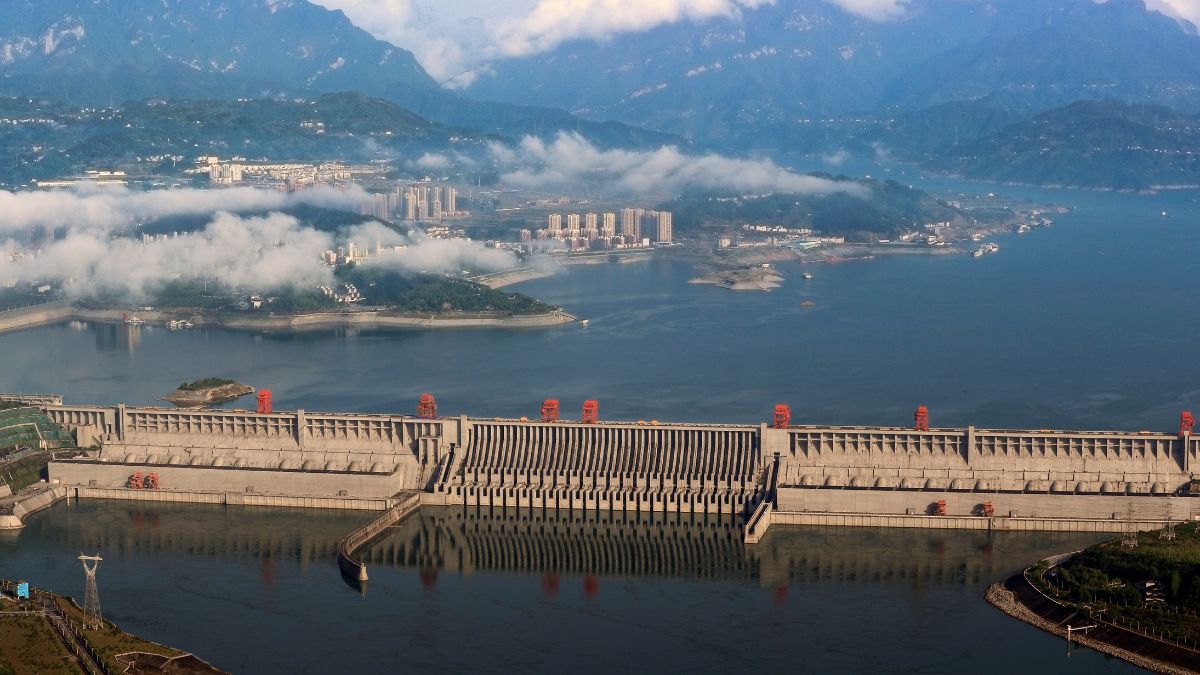The Three Gorges Dam in China, the world’s largest hydroelectric power station, has long been a subject of fascination not only for its engineering marvel but also for its potential impact on Earth’s rotation.
While this claim might sound far-fetched, there is scientific evidence suggesting that the dam could indeed alter the planet’s spin, albeit in very subtle ways.
What makes the Three Gorges Dam so unique?
The Three Gorges Dam, located on the Yangtze River in China’s Hubei Province, stands as a monumental achievement of human engineering. The dam was completed in 2012 after nearly two decades of construction. Its staggering dimensions — 2,335 metres (7,660 feet) long and 185 metres (607 feet) high — make it the largest dam ever built.
The dam’s reservoir has a capacity of 40 cubic kilometres (about 10 trillion gallons) of water, which can produce up to 22,500 megawatts of electricity, meeting the energy needs of millions.
Beyond its hydroelectric capabilities, the dam also controls flooding and improves river navigation, making it a key part of China’s broader economic and infrastructural strategy.
However, despite these benefits, the project has been mired in controversy, largely due to its environmental and social impacts. The dam displaced over 1.3 million people and flooded 632 square kilometres of land, affecting wildlife habitats and local ecosystems.
How does the dam impact Earth’s rotation?
The most surprising claim about the Three Gorges Dam is its potential effect on Earth’s rotation, a topic that first came into the spotlight in a 2005 Nasa post.
According to Dr. Benjamin Fong Chao, a geophysicist at Nasa’s Goddard Space Flight Center, the dam’s massive reservoir holds enough water to shift the distribution of Earth’s mass. This is based on the principle of moment of inertia, which governs how the distribution of mass affects an object’s rotational speed.
Chao calculated that the dam’s reservoir could increase the length of a day by approximately 0.06 microseconds. In addition to slowing Earth’s spin, the dam could also shift the planet’s pole position by about 2 centimetres (0.8 inches).
“It’s not much, but it’s fairly significant for a human-made structure,” Chao said. While these changes are minute and imperceptible in daily life, they highlight how human engineering can, in theory, have planetary-scale effects.
Can disasters effect Earth’s rotation?
The notion that human activity can affect Earth’s rotation isn’t entirely new. In fact, Nasa scientists have long studied how natural disasters, such as earthquakes, can impact the planet’s spin.
A particularly striking example occurred in 2004 when a massive earthquake and tsunami struck the Indian Ocean. This catastrophic event, with its large-scale tectonic plate movements, shortened the length of a day by 2.68 microseconds, according to Nasa research.
Although the effect of the Three Gorges Dam is much smaller than that of an earthquake, the comparison highlights the delicate balance of Earth’s rotational dynamics. Large-scale redistributions of mass — whether caused by natural events or human-made structures—can shift the planet’s moment of inertia and slightly alter the length of a day.
The events and the effect they have had on a day’s length:
Three Gorges Dam: +0.06 microseconds
2004 Indian Ocean earthquake: -2.68 microseconds
Climate change (Est. effect): Gradual increase
What role does Climate change play in Earth’s mass?
Humanity’s influence on Earth’s rotation isn’t limited to monumental infrastructure like the Three Gorges Dam. Climate change also plays a significant role in shifting the distribution of the planet’s mass.
As global temperatures rise, the polar ice caps melt, and sea levels increase, causing more water to accumulate near the equator. This redistribution of mass could, in theory, further slow Earth’s spin.
Humans are influencing the rotation of the Earth in other ways too, according to Nasa scientists. This gradual accumulation of mass at the equator, combined with the polar ice melt, has the potential to slow down Earth’s rotation over the coming decades.
However, much like the effect of the Three Gorges Dam, the changes would be minuscule and barely noticeable in everyday life.
Will it change the way we keep time?
One of the most fascinating implications of these changes, however small, lies in the field of global timekeeping. As Earth’s rotation gradually slows, even by tiny fractions of a second, time-keeping mechanisms like atomic clocks, which are used for ultra-precise measurements, may need to be recalibrated.
Some scientists have suggested that a “negative leap second” — a minute with just 59 seconds — might be required in the next few decades to adjust for these gradual changes in day length.
While this might seem trivial, the cumulative effects of time-keeping errors could disrupt modern technologies that rely on precise timing, including GPS systems, satellite communications, and financial transactions.
The effect is negligible to our everyday perception of life on planet Earth but it could lead to confusion for super-accurate time-keeping devices like atomic clocks, reported IFL Science.
With inputs from agencies
)